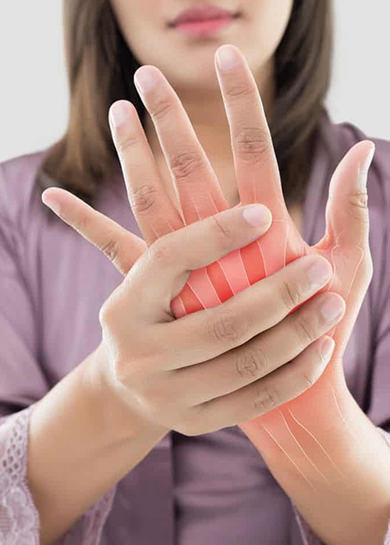What is Rheumatoid Arthritis?
The human body has a mechanism called the immune system that protects our body from threats such as viruses and bacteria.
The disease known as inflammatory rheumatism in the public is the condition of the immune system, whose duty is to protect the body, attacking the body's own tissues for an unknown reason. In this disease, there is an inflammatory problem that can affect almost all of the joints. With the disease, the joint linings are damaged, causing swelling and pain. As a result, wear and tear will occur in the joints and bones.
Unfortunately, the inflammation that occurs with inflammatory rheumatism does not only remain in the joints, it can also affect many organs, especially the skin, eyes, heart and lungs, and can even cause problems in the blood and nervous system.
In severe cases, rheumatoid arthritis can sometimes cause negatives that lead to physical disability.
Pay attention to the causes of rheumatoid arthritis!
As it is known, our joints perform the function of connecting bones. Thus, our bones, which consist of a rigid structure, gain flexibility and ease of movement thanks to the joints. The joint capsule protects the joint area from the outside, while inside there is a very important fluid called synovium that prevents friction and abrasion and has a lubricating effect. Rheumatoid arthritis occurs due to the immune system attacking this synovial fluid.
As a result of the immune system attacking this synovial fluid for unknown reasons, inflammation begins and thus causes damage to bone and cartilage tissue. In the following process, tendons and ligaments, which are the reason for the existence of the joints, weaken by losing their functions. As a result, the joints slowly begin to lose their natural state and show deformities.
Rheumatoid arthritis, which is included in the group of autoimmune diseases, finds a place for itself in structurally more sensitive people, although its cause is mostly unknown.
What are the risk factors for rheumatoid arthritis?
Nearly 4 out of every 5 people with this disease are female patients. But considering that the rate of contracting the disease globally is almost 1%, let's talk about our country, when it is mentioned that there are 700-800 thousand people at risk of getting sick and carrying the risk, the severity of the situation will be better understood. The fact that 150-200 thousand of these patients are male suggests that the disease poses a significant risk not only for women but also for men.
If the disease is present in family members, other family members may also carry this risk. However, it should not be concluded from this that the disease is definitely genetic. But still, this risk should not be ignored.
Inflammatory rheumatism can manifest itself at any age. In fact, many people can get this disease at a very young age, and even children can be seen among the victims of the disease.
Smoking and alcohol consumption make a strong contribution to the formation and development of the disease and can make treatment difficult. In addition to this information, children of smoking mothers may have an increased risk of inflammatory rheumatism.
Studies have shown that the risk factor is higher in women who have never given birth compared to those who have given birth. Being overweight and especially obesity is considered an important factor in this disease.
What kind of disease is rheumatoid?
Rheumatoid arthritis is a disease in which joints swell and deform if not diagnosed and stopped in time.
Along with this inflammatory condition, swelling and severe pain occur spontaneously, which distinguishes it from other joint diseases.
Coordinated symptoms are seen in the same limbs with the disease. For example, the left wrist and the right wrist experience the same problem.
Symptoms such as loss of appetite, fatigue and fever may be felt in the disease. Inflammation may not only affect the joints, it can spread to many organs of the body.
What are the main symptoms of rheumatoid arthritis?
In the morning hours, morning stiffness dominates the body when waking up from sleep, it is difficult to open hands and move the body. This situation can make itself felt for about 30 minutes.
Pain seen especially in small joints, wrists, hand and foot joints are characterized. As the disease progresses, deformities occur in the joints. Swelling and pain in the joints are seen with the same symmetry. That is, the same joints swell and hurt at the same time.
Low grade fever, loss of appetite and fatigue may accompany. Along with the deterioration in the joints, patients get tired quickly and experience mobility restrictions.
Although not severe, some patients have weight loss.

